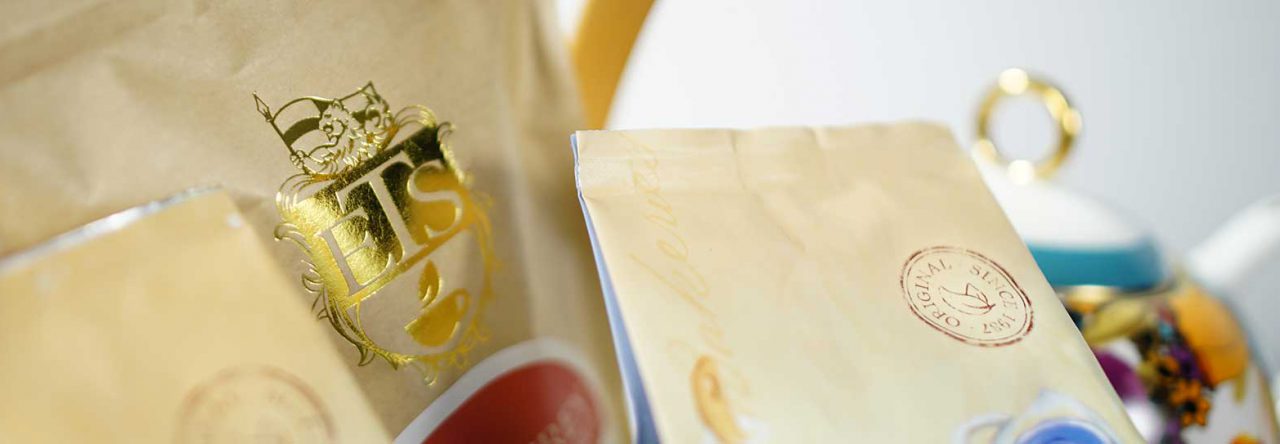 Let’s have a quick show of hands from all of you who use teabags. Don’t be shy. There’s no cause for embarrassment here. The question being addressed is “to squeeze or not to squeeze” — and we’re not talking about oranges. Do you squeeze out every drop of liquid from your teabags? If you answered “Yes,” read on for some information that could change your mind. The rest of you, good going.
Let’s have a quick show of hands from all of you who use teabags. Don’t be shy. There’s no cause for embarrassment here. The question being addressed is “to squeeze or not to squeeze” — and we’re not talking about oranges. Do you squeeze out every drop of liquid from your teabags? If you answered “Yes,” read on for some information that could change your mind. The rest of you, good going.
Squeezing teabags is very tempting. After all, we want to get the most from our tea dollars. So, those last few drops in your teabag seem like a waste if you don’t squeeze them into your cup. Right? Well, that would seem logical on the surface, but delving a little deeper reveals a few more facts that put a different spin on things.
Teabags in general have been getting a bad rap from serious tea drinkers, including me. Even so, there are some teas that come in bags that have proven their quality and overall value with their superior taste. [Note: For the purpose of this article, I’m talking about teabags made from hemp and containing very small pieces (dust or fannings) of black tea.] They do this mainly by starting with better tasting tea and processing it as quickly as possible.
Speed is essential, since freshness is an issue with teabags. The tea leaf pieces have been broken up and processed so much that they lose a lot of their flavor elements, including essential oils. To preserve the remaining freshness, tea companies have begun double packing their teabags inside foil bags inside their exterior boxes or larger foil pouches. The loss of freshness before the tea dust and fannings are put in those square, round, flow-thru, or pyramid bags increases the likelihood of bitterness.
Bitter tea “dregs” is another issue. When you brew loose tea made of larger tea leaf pieces, you can strain out those pieces from the liquid pretty effectively, and therefore avoid bitterness. Brewing with loose tea made from smaller pieces, such as an English Breakfast blend, can be a different matter, with tiny bits remaining in the cup or pot after straining. This is the “dregs” of the tea that you want to avoid. When you squeeze out a teabag, this “dregs” is also what you are getting (tiny bits hard to see with the naked eye). It tends to contain the most bitterness. If you insist on squeezing out the last drop from your teabags, don’t blame the tea company if your tea tastes bitter.
The danger of the teabag breaking while being squeezed is another risk. Speaking from personal experience, it’s not good when that happens. While bad things can happen to good tea any time, this is one you can prevent by not squeezing.
Teabags have uses beyond producing a tasty hot beverage. From relieving toothache (wet a teabag and place it over your tooth) and paper dying (throw a few teabags in a bowl of warm water and add paper, let sit for awhile until you get the color you want), to taking a bath in ginger tea to help soothe your cold and flu symptoms, teabags can be the “MacGyver” item in your pantry. Just as MacGyver could use simple items to get out of a tough situation, you can use those teabags to solve a host of problems.
Here’s a tip if you’re selling your house: Steep up some jasmine tea, pour it into a glass bowl, set it on your kitchen counter or dining table before buyers are scheduled to arrive or the open-house starts. Your house will smell marvelous and make a very memorable impression on the buyers (assuming that the rest of the house is in decent shape).
Whatever use you decide to put your teabags to (even making a cup of tea to drink), resist the urge to squeeze that teabag. You’ll thank yourself for it. Absolutely!
Over on her blog, Tea Time with A.C. Cargill, A.C. puts the squeeze on what she calls the “tea life” daily.



Leave a comment